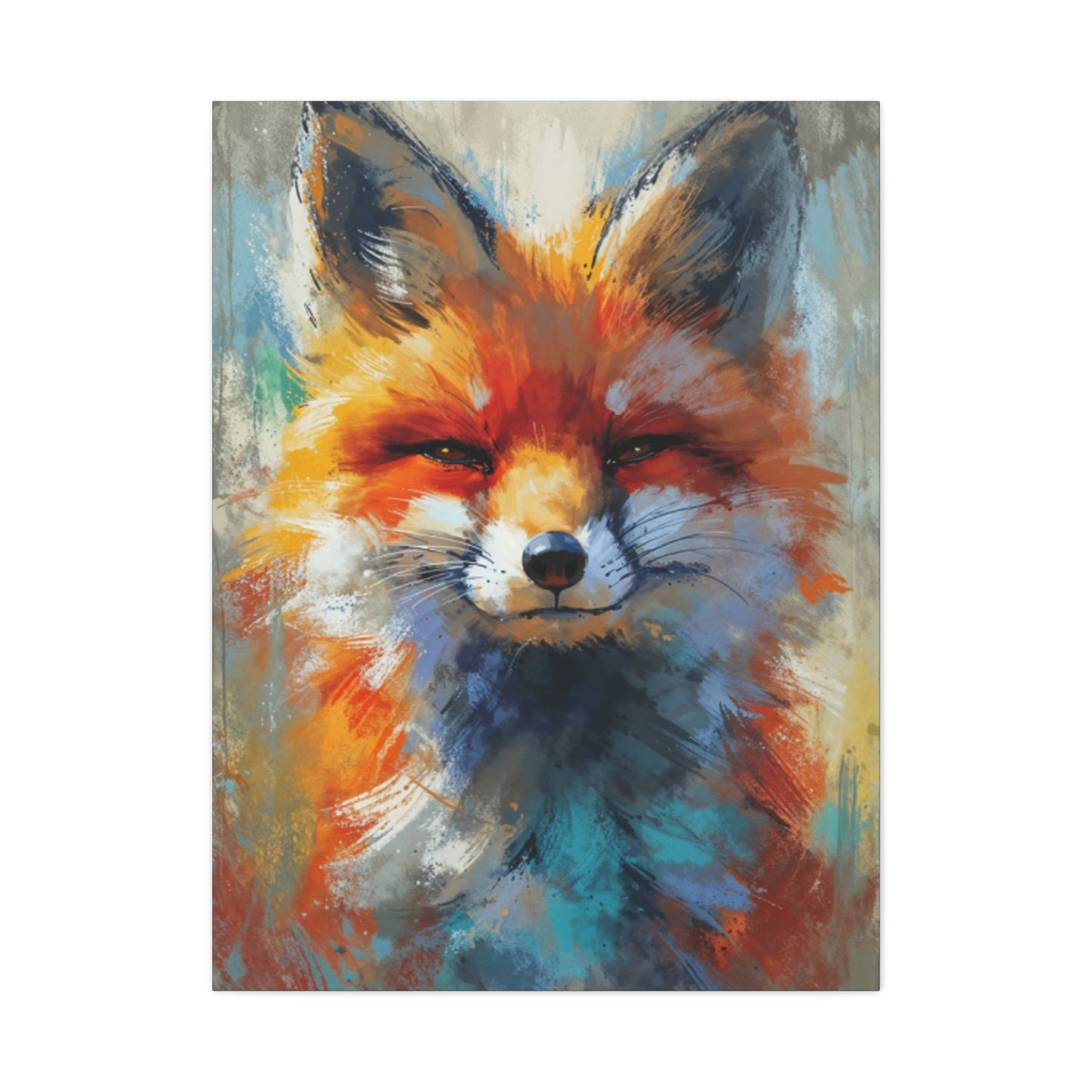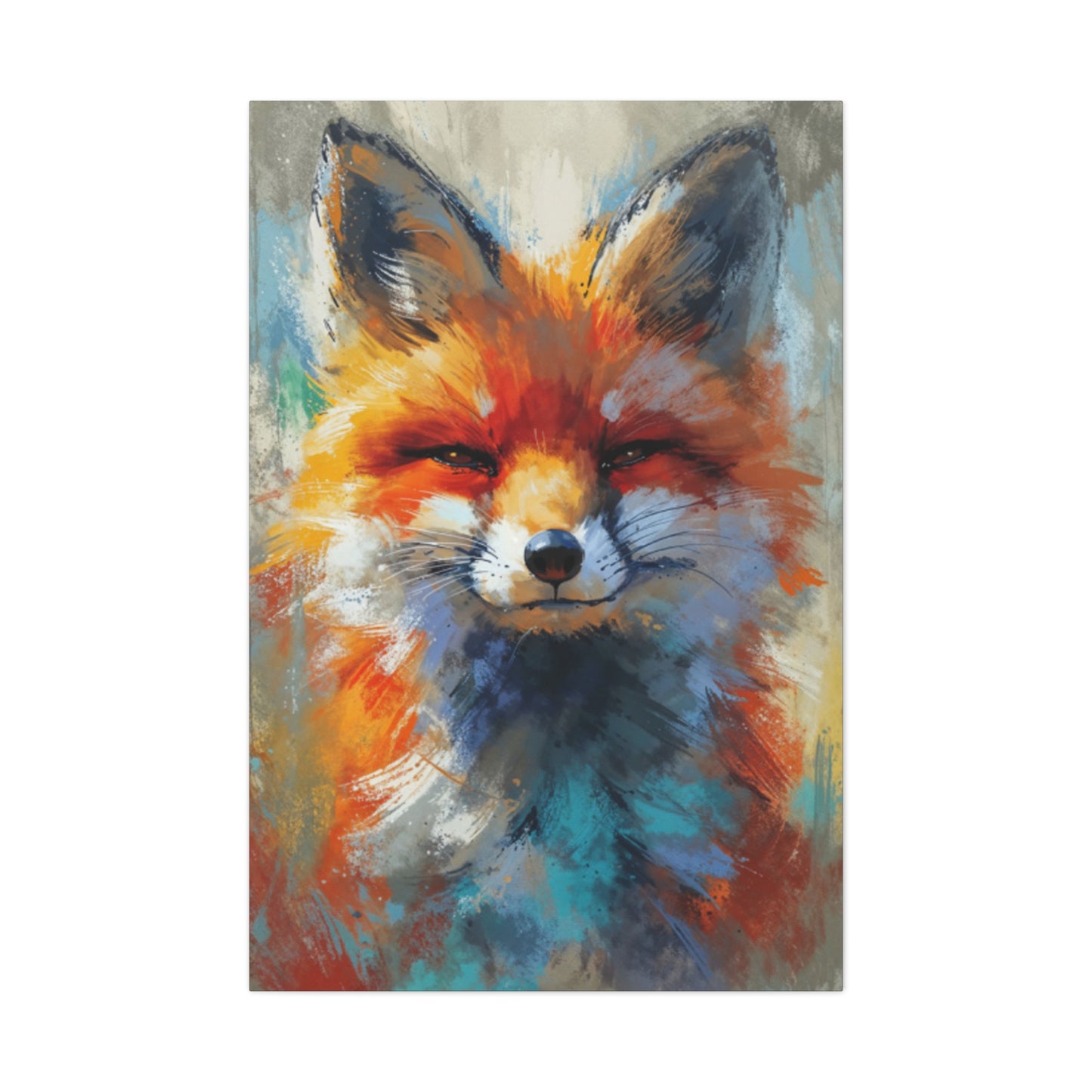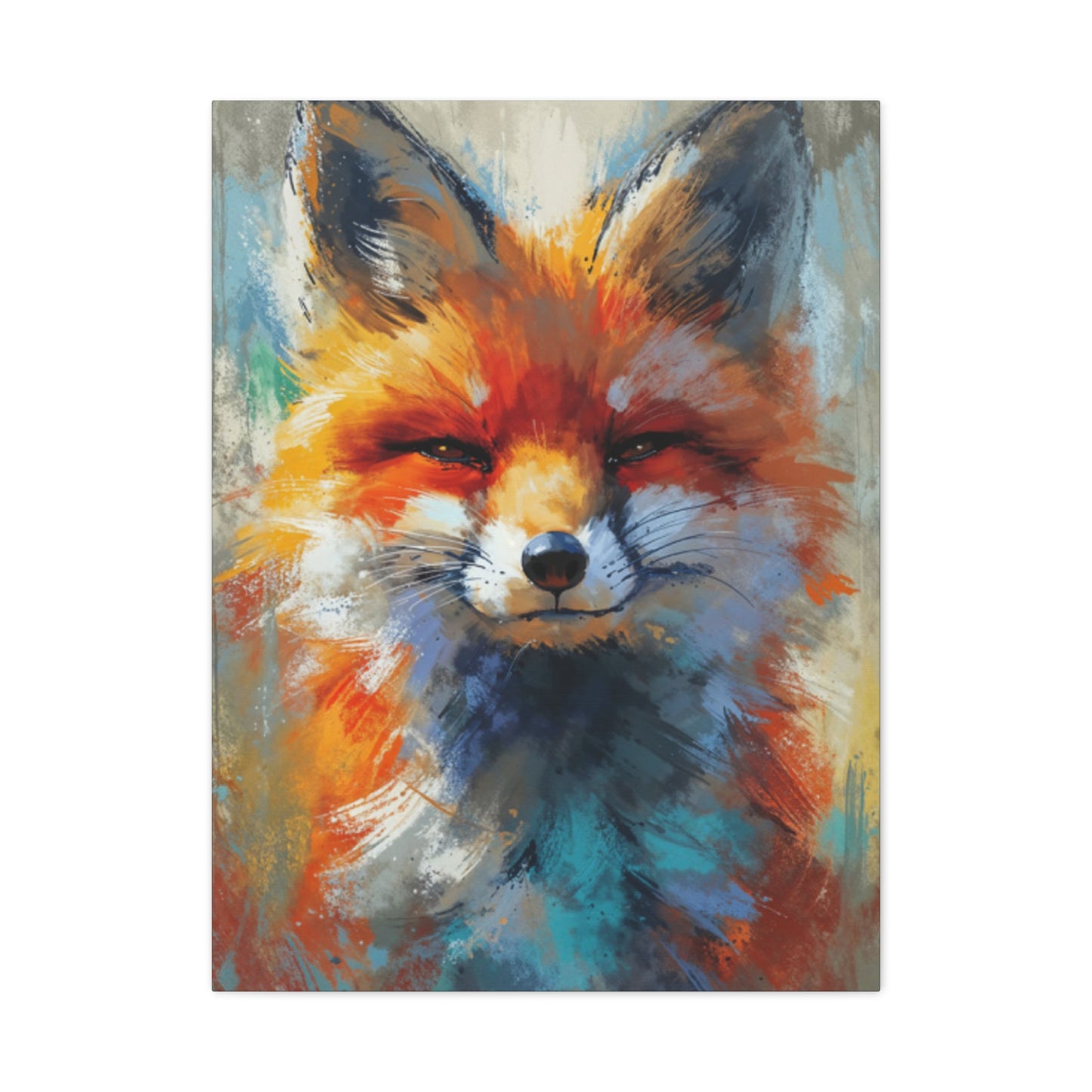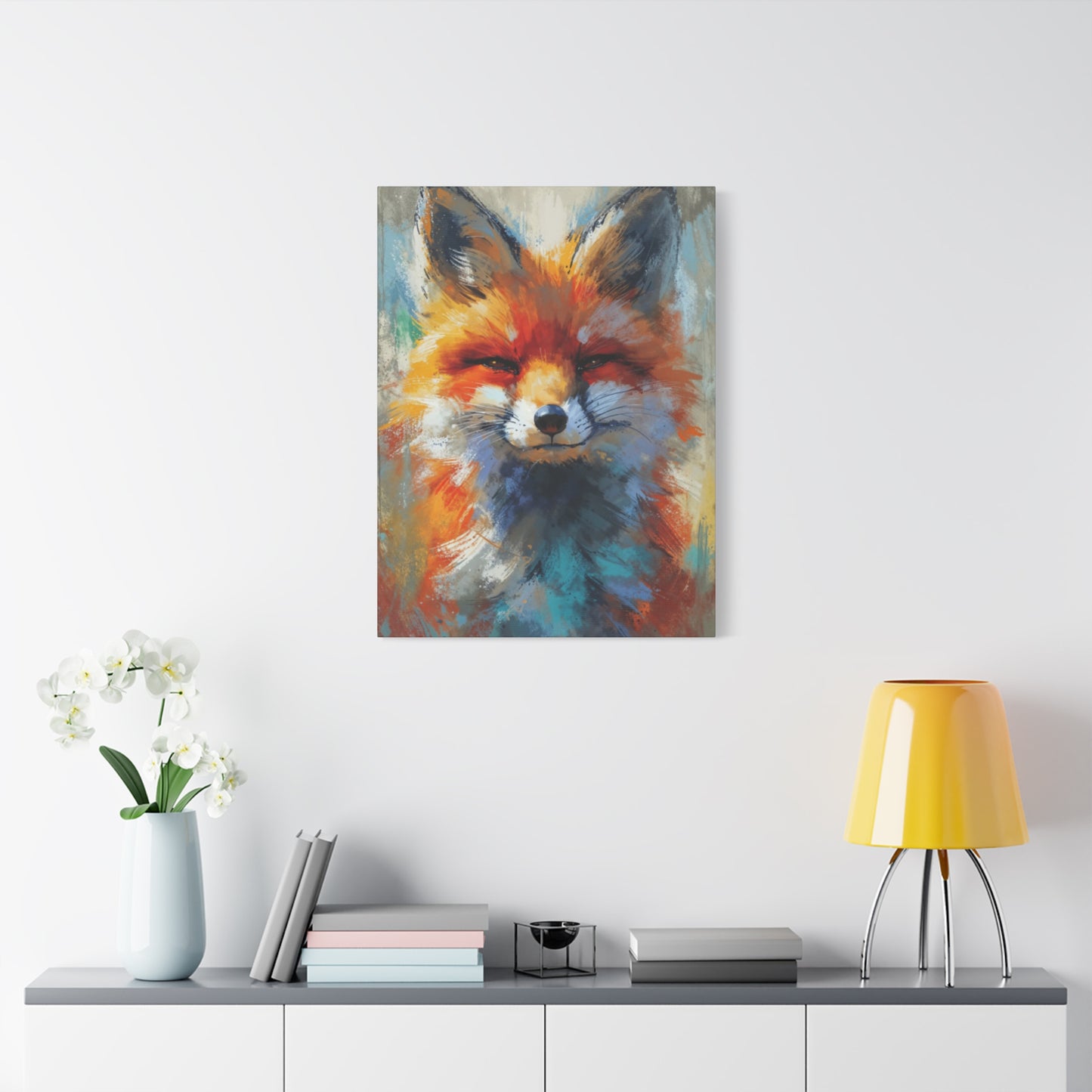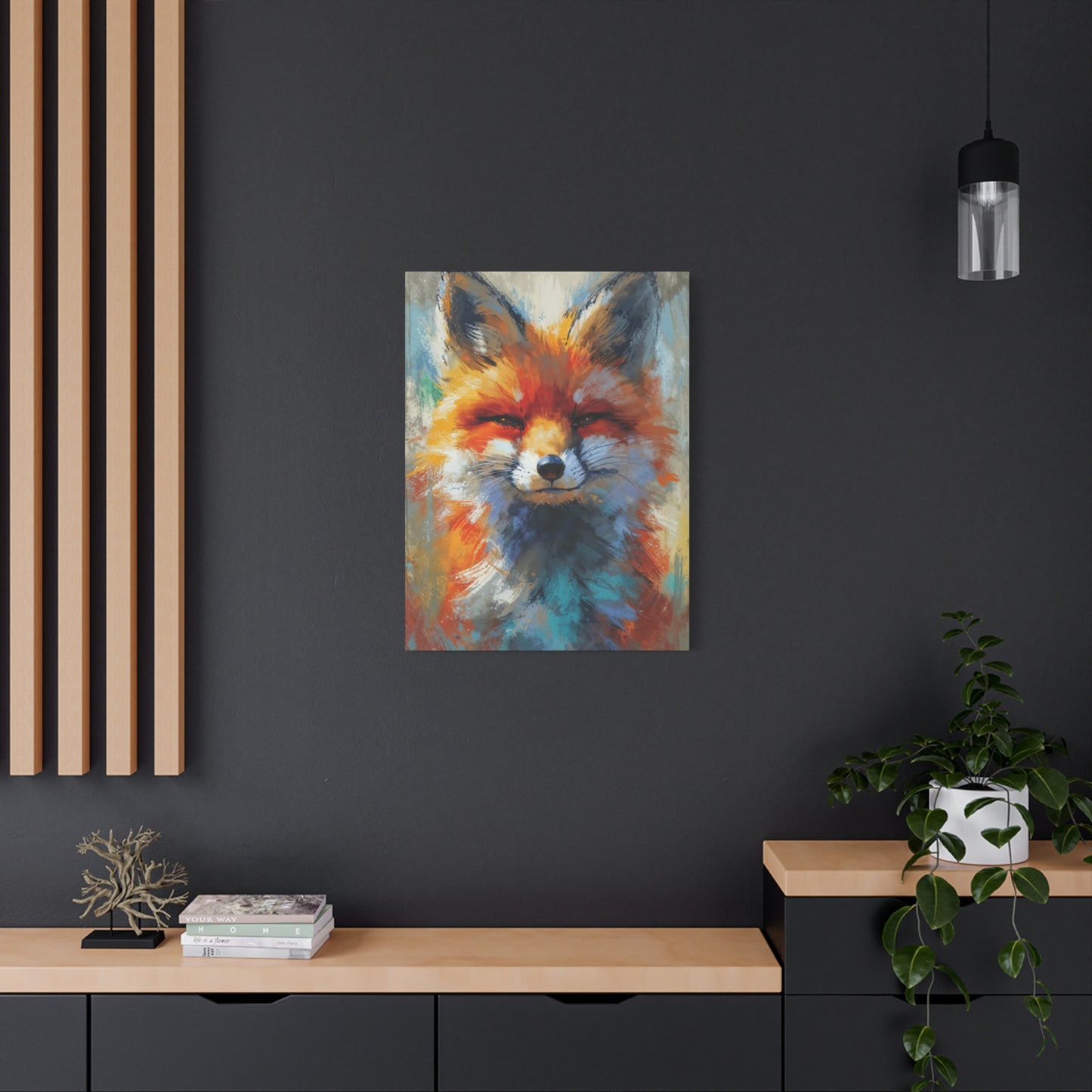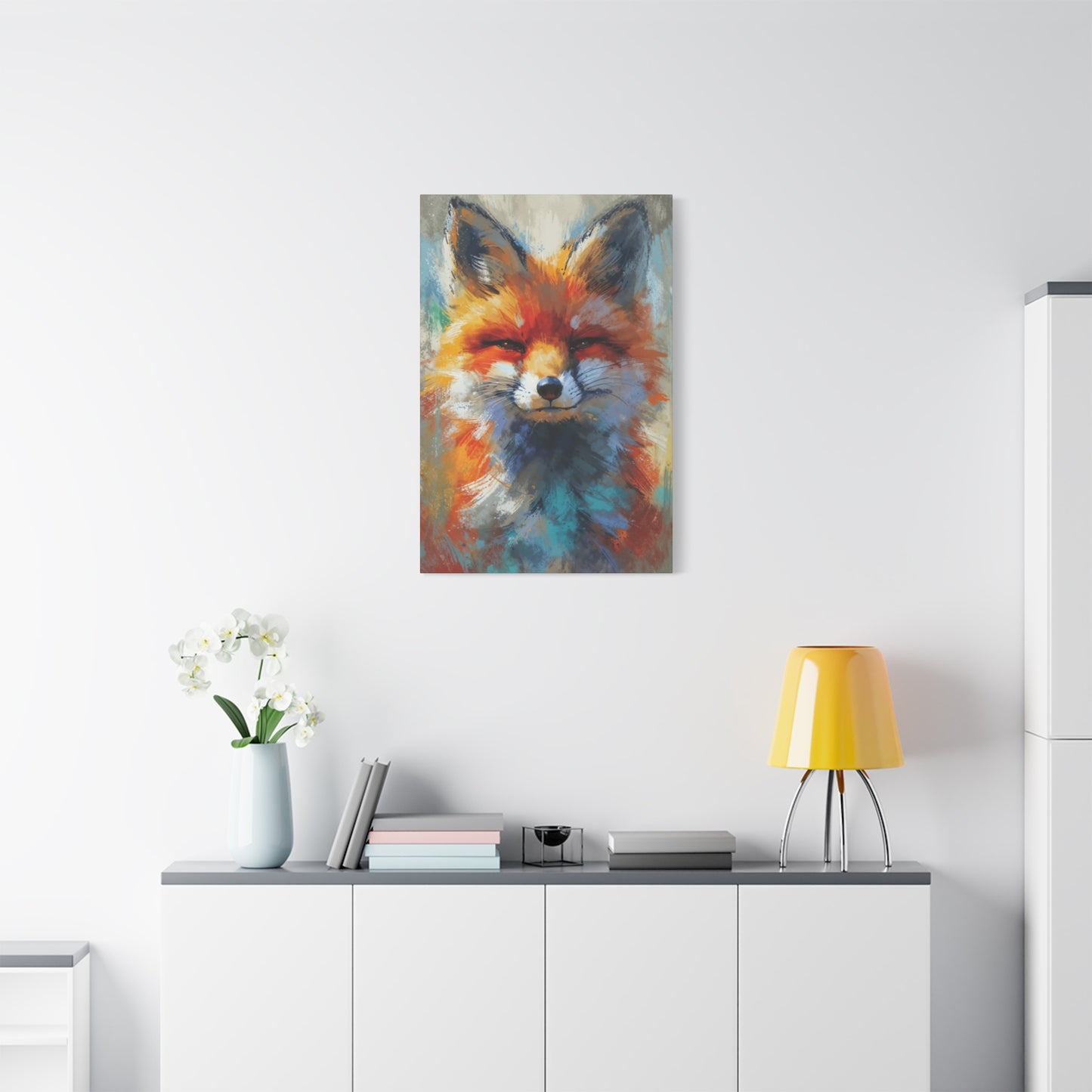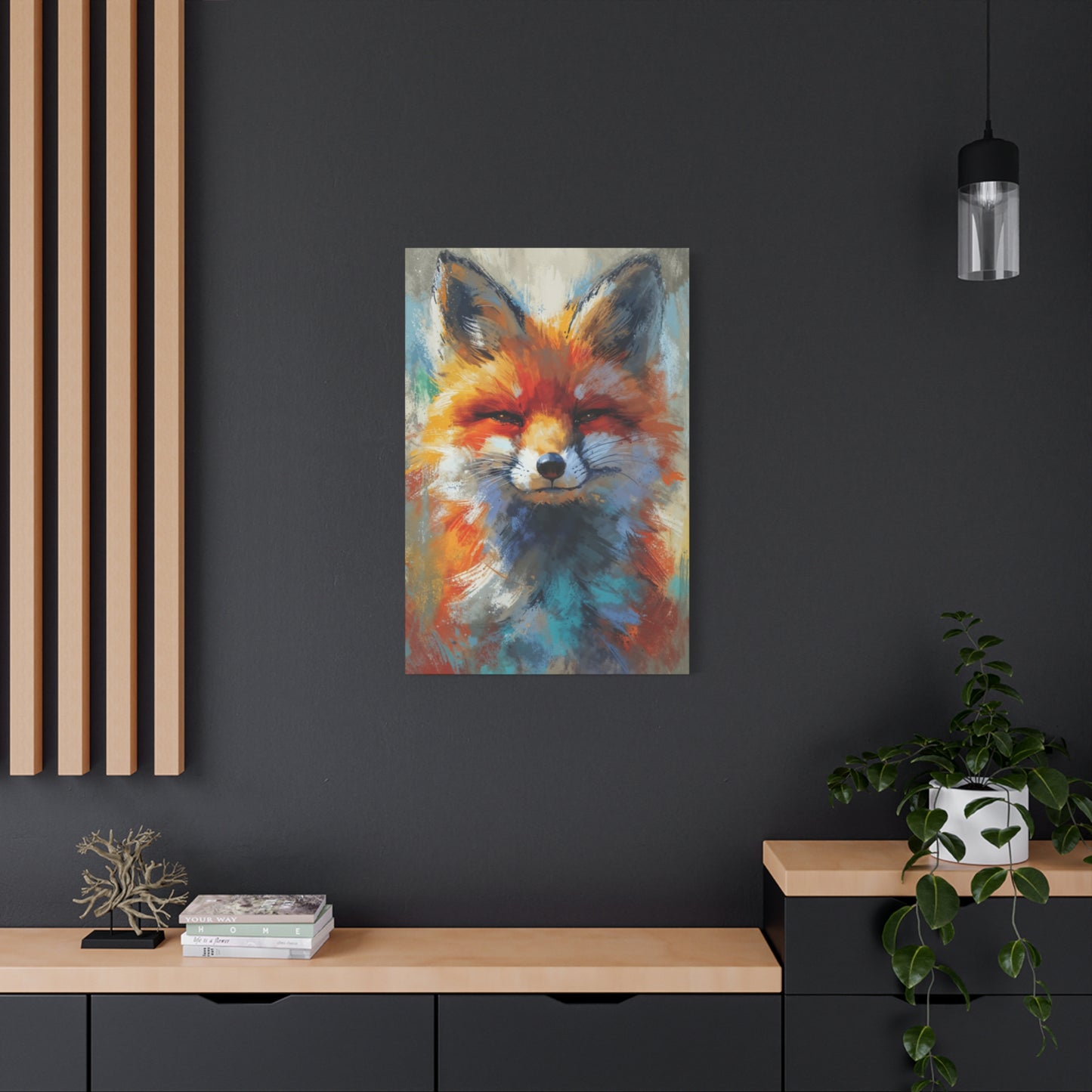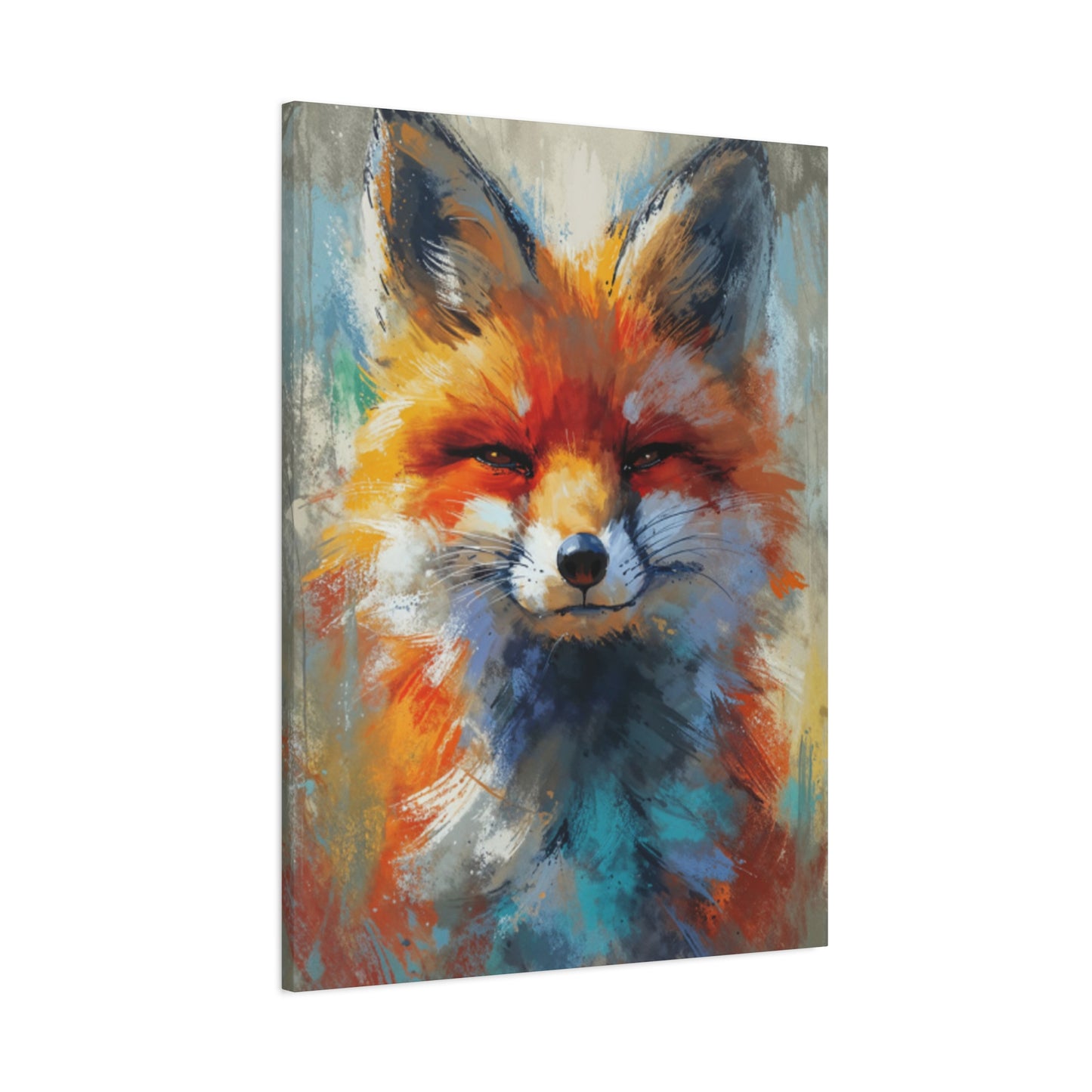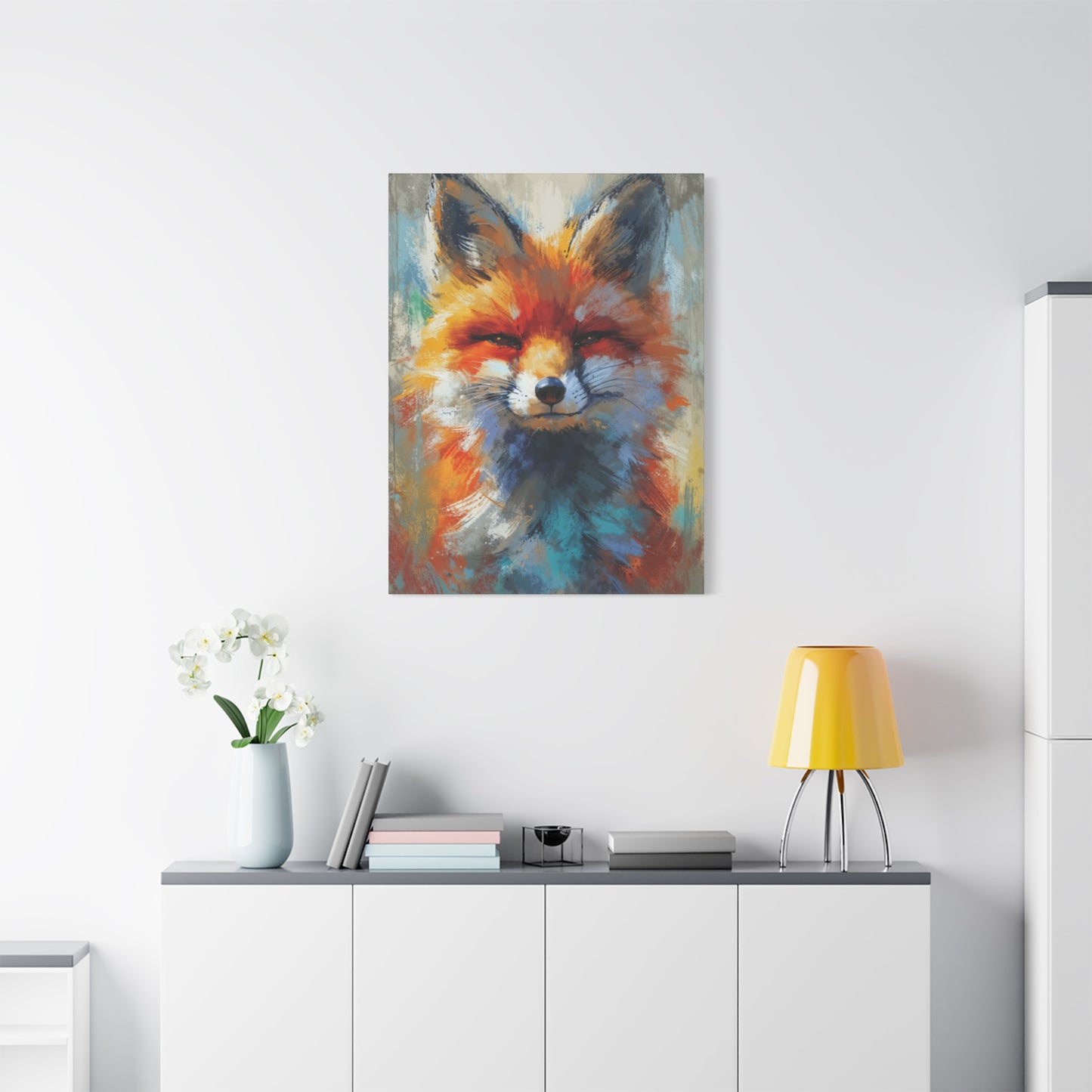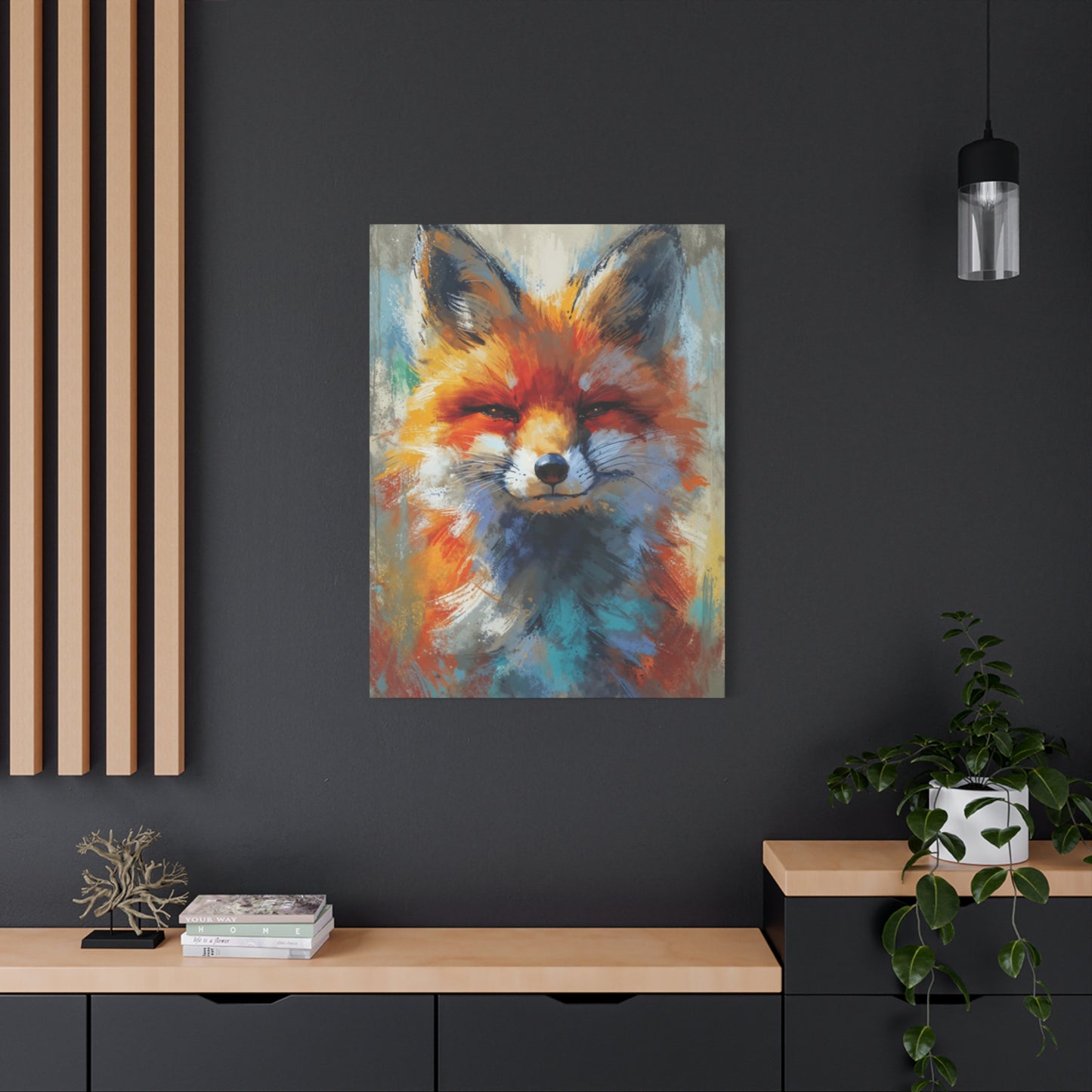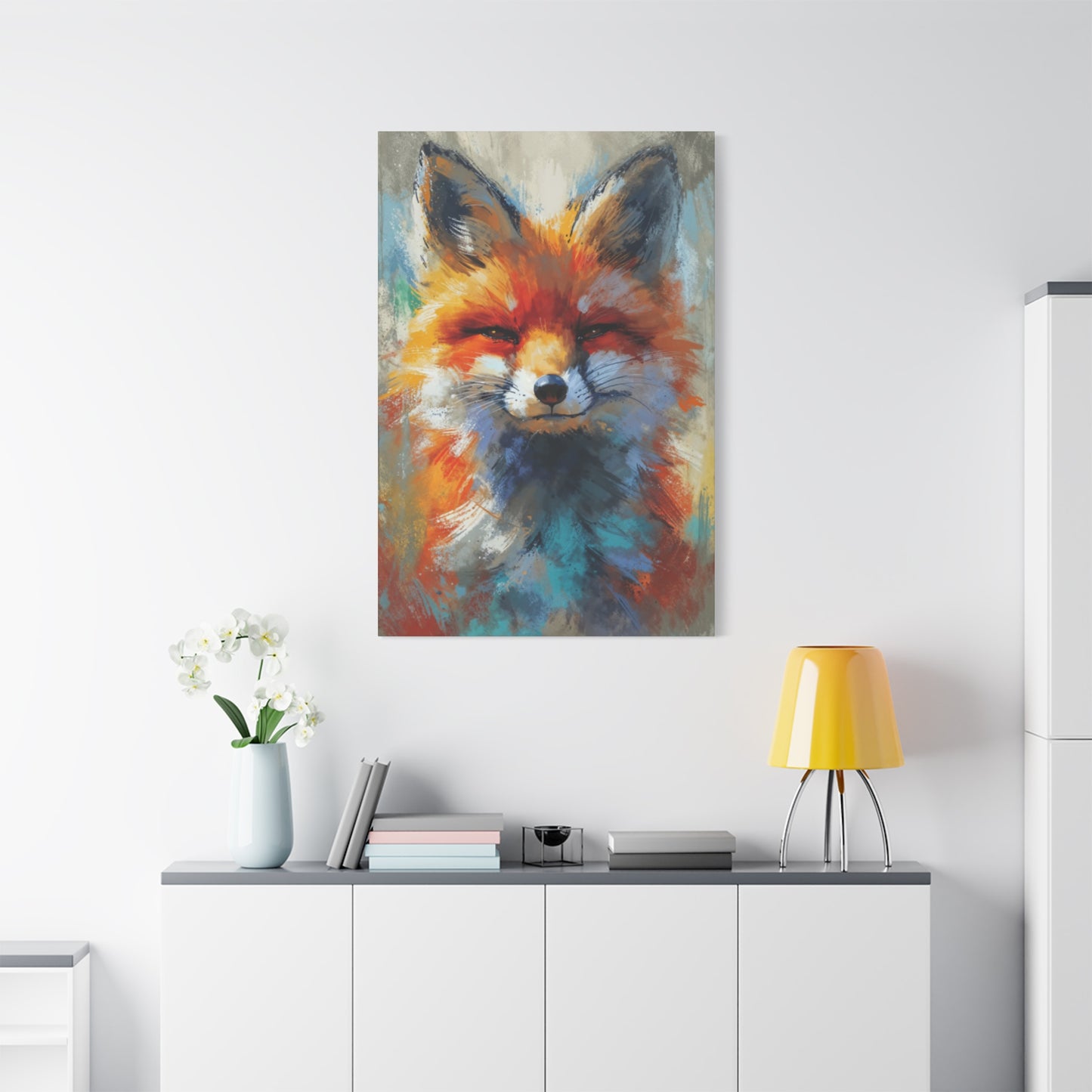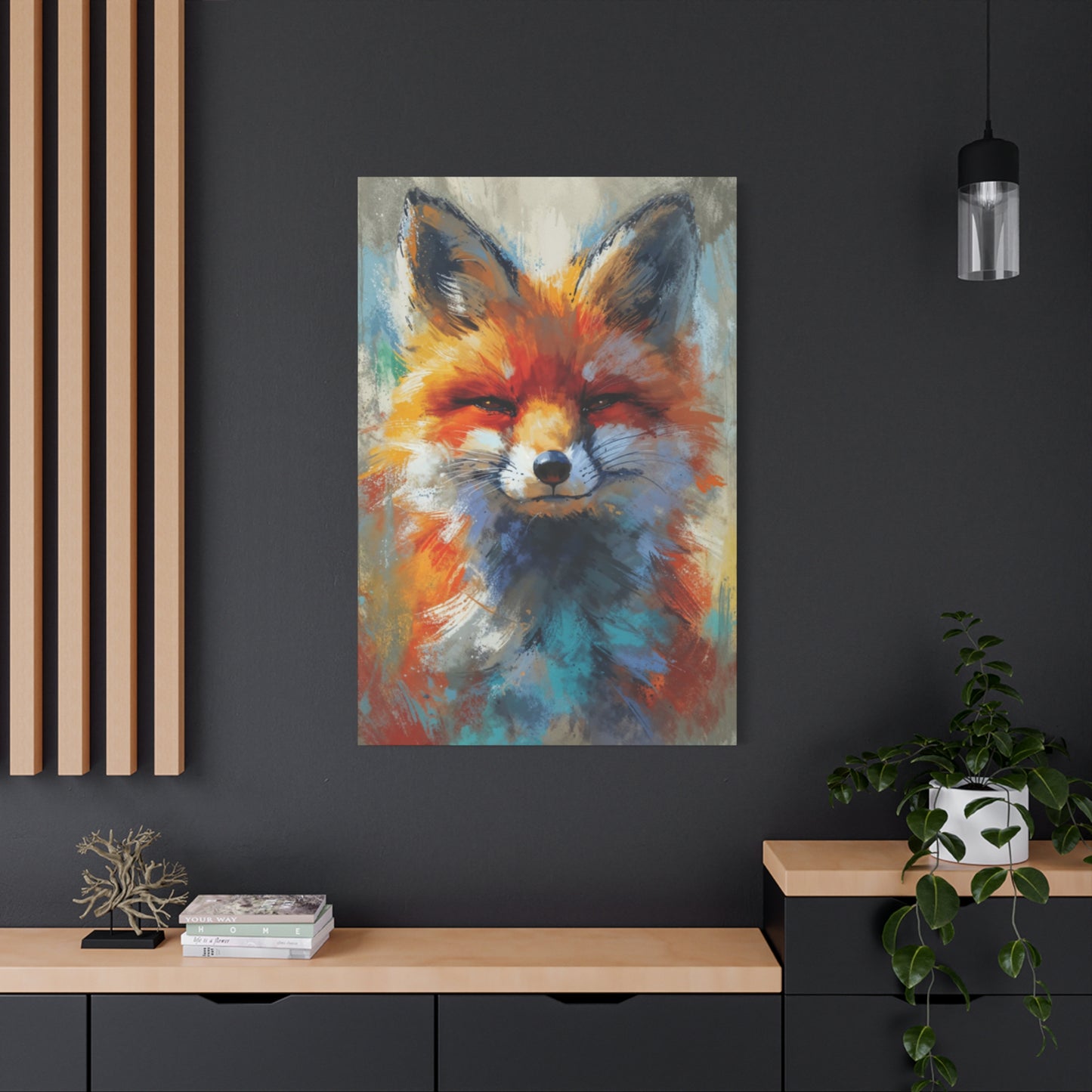Nature Meets Art: How Close-Up Abstract Fox Wall Art Brings the Outdoors Into Your Home
The world of interior decoration has witnessed a remarkable shift toward incorporating wildlife motifs that blend natural beauty with contemporary aesthetics. Among the most sought-after designs in recent years, fox-themed artwork has emerged as a favorite among homeowners and design enthusiasts alike. These magnificent creatures, known for their intelligence and grace, bring a sense of wonder and sophistication when portrayed through artistic interpretation. When rendered in abstract styles with detailed perspectives, these pieces become more than mere decorations—they transform into conversation starters that infuse personality and character into any living environment.
The appeal of wildlife-inspired decor extends far beyond simple admiration for animals. It represents a deeper connection to the natural world, a yearning to bring elements of the outdoors into our increasingly urbanized lives. Fox imagery, in particular, carries symbolic weight across various cultures, representing cleverness, adaptability, and beauty. When artists combine these meaningful subjects with abstract techniques and intimate viewing angles, they create works that resonate on multiple levels—visually striking, emotionally engaging, and intellectually stimulating.
Contemporary homeowners are increasingly seeking artwork that makes bold statements while maintaining versatility. Abstract interpretations of fox subjects fulfill this need perfectly, offering vibrant color palettes, dynamic compositions, and textures that complement a wide range of interior design styles. Whether your space leans toward minimalist modernism, rustic farmhouse charm, or eclectic bohemian flair, these artistic representations can seamlessly integrate while adding that special touch that makes a house feel like a home.
Artistic Expression Through Wildlife Imagery
Wildlife has served as inspiration for artists throughout human history, from ancient cave paintings to contemporary digital creations. The enduring fascination with depicting animals in art stems from our fundamental connection to the natural world and our desire to capture its essence. Abstract interpretations of fox subjects represent a modern evolution of this ancient practice, blending traditional wildlife appreciation with contemporary artistic sensibilities.
The beauty of abstract wildlife art lies in its ability to convey the spirit and energy of its subject without being constrained by photorealistic representation. Artists working in this genre have the freedom to emphasize certain features, exaggerate colors, and experiment with composition in ways that create emotional impact. When focusing on fox subjects, artists often highlight the animal's distinctive features—the pointed ears, alert eyes, and luxurious coat—while reimagining these elements through creative color choices and innovative brushwork.
This artistic approach allows for tremendous variety within the genre. Some pieces might feature bold, sweeping brushstrokes that suggest movement and vitality, while others employ intricate patterns and layered textures that reward closer examination. The abstract nature of these works means that each viewer can interpret them differently, finding personal meaning and connection in the colors, shapes, and overall composition. This interpretive quality makes such artwork particularly engaging, as it invites ongoing dialogue between the piece and its audience.
Creating abstract fox art requires both technical skill and creative vision. Artists must understand the anatomy and characteristics of their subject well enough to capture its essence, even when departing from realistic representation. They need to make deliberate choices about color theory, composition, and technique to create pieces that are both visually coherent and emotionally resonant. The best examples of this art form achieve a delicate balance between recognizability and abstraction, allowing viewers to see the fox within the artwork while appreciating the piece as an abstract composition in its own right.
The process of creating these works often involves multiple layers, building depth and complexity through successive applications of paint or other media. Artists might begin with broad washes of color to establish the overall mood and composition, then add details and highlights to bring focus to key features. This layering technique creates visual interest and gives the finished piece a sense of depth and dimension that flat, single-layer works cannot achieve.
Detailed Perspectives in Animal-Themed Artwork
When artists choose to portray their subjects from intimate viewing distances, they create opportunities for emotional connection and detailed observation that wider perspectives cannot provide. This approach to composition brings viewers face-to-face with the subject, creating a sense of intimacy and immediacy that makes the artwork particularly engaging. In the context of fox imagery, this technique allows artists to showcase the animal's expressive features and intricate details in ways that captivate attention and invite prolonged viewing.
The decision to work with detailed perspectives requires careful consideration of composition and focal points. Artists must determine which features to emphasize and how to frame their subject within the available space. With fox subjects, many artists choose to focus on the face, particularly the eyes, which serve as windows into the animal's personality and spirit. By filling the canvas with these detailed views, artists create powerful visual statements that command attention in any room.
This compositional approach also influences how viewers interact with the artwork. When confronted with a detailed perspective, viewers instinctively lean in, examining the nuances of color, texture, and technique that might be lost in wider views. This interactive quality makes such pieces particularly suitable for spaces where people gather and converse, as the artwork naturally becomes a topic of discussion and shared appreciation.
From a technical standpoint, creating effective detailed perspective pieces requires mastery of scale and proportion. Artists must ensure that even when focusing on specific features, the overall composition remains balanced and harmonious. They need to manage the edges of their composition carefully, deciding what to include in the frame and what to leave to the viewer's imagination. This editing process is crucial to the success of the final piece, as too much detail can overwhelm, while too little may leave the composition feeling incomplete.
The intimacy created by detailed perspectives also allows artists to explore texture in greater depth. When working at this scale, the texture of fur, the gleam of eyes, and the subtle gradations of color across a face become prominent features of the composition. Artists can use various techniques—impasto for raised textures, glazing for luminous depths, or palette knife work for bold, expressive marks—to create tactile interest that adds another dimension to the viewing experience.
Infusing Spaces with Natural Elements Through Decor
Modern interior design increasingly recognizes the psychological and aesthetic benefits of incorporating natural elements into living spaces. This biophilic approach to design acknowledges our innate connection to nature and seeks to strengthen that bond through thoughtful decoration choices. Wildlife-themed artwork serves as a powerful tool in this endeavor, bringing the essence of the natural world into our homes without requiring us to sacrifice comfort or style.
The presence of nature-inspired art in a room can have profound effects on the atmosphere and mood of the space. Studies have shown that viewing natural imagery can reduce stress, improve focus, and enhance overall well-being. When you incorporate fox-themed abstract art into your decor, you're not just adding visual interest—you're creating an environment that nurtures both aesthetic appreciation and emotional health.
Fox imagery carries particular advantages when it comes to nature-inspired decor. These animals embody qualities that many people admire and aspire to—intelligence, adaptability, grace, and beauty. Unlike some wildlife subjects that might feel too wild or intimidating for residential spaces, foxes strike a perfect balance between exotic appeal and approachable charm. They're familiar enough to feel welcoming, yet distinctive enough to make a statement.
When selecting nature-inspired art for your space, consider how different pieces might complement your existing decor while adding fresh visual interest. Abstract fox art works particularly well in this regard because its interpretive nature allows it to bridge multiple design aesthetics. A piece featuring warm, earthy tones might enhance a rustic or traditional space, while one with bold, unconventional colors could energize a modern or eclectic room.
The placement of nature-inspired artwork also plays a crucial role in its impact. Consider positioning pieces where they'll be frequently viewed—above a sofa, across from seating areas, or in hallways where they can be appreciated in passing. The detailed nature of intimate perspective pieces makes them particularly suitable for spaces where viewers can pause and engage with the artwork more deeply, such as reading nooks, home offices, or bedroom sitting areas.
Beyond individual pieces, think about how nature-inspired artwork can work as part of a larger design narrative in your home. You might create a gallery wall that combines fox art with other wildlife subjects, botanical prints, or landscape photographs. Alternatively, a single striking piece can serve as the focal point of a room, anchoring the design scheme and setting the tone for all other decorative elements.
Contemporary Aesthetics in Animal Representations
The contemporary art world has embraced wildlife subjects with renewed enthusiasm, finding fresh ways to interpret these timeless themes. Modern artists working with animal imagery are pushing boundaries, experimenting with styles, techniques, and presentations that would have been unimaginable to earlier generations. This evolution has produced a rich variety of wildlife art that appeals to diverse tastes and fits seamlessly into contemporary homes.
Contemporary approaches to fox imagery often involve recontextualizing the subject through unexpected color palettes, simplified forms, or experimental techniques. Rather than striving for photorealistic accuracy, modern artists might use geometric shapes to suggest the animal's form, or employ neon colors that have no basis in reality but create striking visual impact. These departures from traditional representation allow the artwork to function both as a depiction of its subject and as an abstract composition in its own right.
The contemporary aesthetic also embraces mixed media approaches, combining traditional painting techniques with digital manipulation, collage elements, or unconventional materials. This eclecticism reflects the diverse influences and tools available to modern artists, as well as a broader cultural acceptance of hybrid forms and boundary-crossing creativity. For collectors and homeowners, this means access to a wider range of options, from traditionally painted canvases to digital prints, textile art, and sculptural interpretations.
One hallmark of contemporary wildlife art is its self-awareness and willingness to comment on the relationship between humans and nature. Some artists create works that celebrate the beauty and mystery of their subjects, while others incorporate elements that remind viewers of conservation challenges or the complex ways we interact with wildlife. This added layer of meaning gives the artwork greater depth and can make it more engaging over time, as viewers discover new interpretations and connections.
The influence of various artistic movements can be seen in contemporary fox art. Pop art's bold colors and graphic sensibilities appear in pieces that transform the animal into an icon. Expressionist approaches emphasize emotional content through exaggerated features and intense colors. Minimalist interpretations reduce the subject to its essential elements, creating streamlined compositions that feel modern and sophisticated. This diversity ensures that there's contemporary fox art to suit virtually any taste or interior design style.
Technology has also transformed how contemporary wildlife art is created and distributed. Digital tools allow artists to experiment rapidly, trying different color schemes, compositions, and effects before committing to a final version. High-quality printing techniques mean that these digital creations can be reproduced with stunning fidelity, making contemporary art more accessible to a broader audience. This democratization of art has contributed to the growing popularity of wildlife-themed decor in homes across various economic levels.
Expressive Color Palettes in Wildlife Compositions
Color serves as one of the most powerful tools in an artist's arsenal, capable of evoking emotions, creating atmosphere, and guiding the viewer's eye through a composition. In abstract fox art, color choices become even more significant because the artist is freed from the constraints of realistic representation. This freedom allows for expressive, unconventional palettes that can transform a familiar subject into something surprising and fresh.
Traditional fox imagery often relies on the animal's natural coloring—russets, oranges, whites, and blacks that accurately represent the species. While these earth tones have their own appeal and can create warm, inviting compositions, abstract artists frequently venture far beyond these safe choices. You might encounter fox art rendered in electric blues and purples, neon greens and pinks, or moody deep teals and charcoals. These unexpected color choices catch the eye immediately and can dramatically alter the mood and feel of the artwork.
The psychology of color plays an important role in how we respond to artwork. Warm colors like reds, oranges, and yellows tend to feel energizing and inviting, advancing toward the viewer and creating a sense of warmth and vitality. Cool colors like blues, greens, and purples generally feel calming and contemplative, receding into the background and creating a sense of space and tranquility. Artists working with abstract fox subjects can manipulate these color properties to create specific emotional responses or atmospheric effects.
Successful use of expressive color requires understanding color theory and relationships. Complementary colors—those opposite each other on the color wheel—create vibrant, dynamic contrasts that energize compositions. Analogous colors—those adjacent on the color wheel—produce harmonious, cohesive palettes that feel unified and balanced. Triadic color schemes use three colors evenly spaced around the color wheel, creating balanced yet vibrant compositions. Abstract artists might employ any of these approaches, or break the rules entirely for specific effects.
The intensity and saturation of colors also significantly impact the artwork's character. Highly saturated, pure colors create bold, attention-grabbing compositions with contemporary flair. Muted, desaturated colors produce more sophisticated, subtle works that feel refined and elegant. Many artists work with a range of saturations within a single piece, using intense colors for focal points and more muted tones for supporting elements.
Color gradients and transitions add another layer of visual interest to abstract wildlife art. Rather than using flat, uniform colors, artists might blend from one hue to another, creating ombre effects that add depth and movement to the composition. These gradations can suggest the play of light across fur, the subtle variations in natural coloring, or simply serve as abstract elements that make the piece more visually engaging.
The background colors in fox art deserve as much consideration as the subject itself. A vibrant subject against a neutral background creates drama through contrast, making the fox the undeniable focal point. Conversely, a more subdued subject against a colorful or patterned background can create a different kind of visual interest, where the interplay between figure and ground becomes part of the composition's appeal. Some artists eliminate distinct backgrounds entirely, allowing their subject to blend into or emerge from an abstract field of color.
Creating Visual Impact in Interior Spaces
When incorporating artwork into your home, the goal extends beyond simply filling wall space—you're aiming to create visual impact that enhances the overall design and atmosphere of the room. Abstract fox art, with its combination of recognizable imagery and creative interpretation, offers excellent potential for making strong visual statements that elevate your interior design.
The concept of a statement piece in interior design refers to an element that immediately draws the eye and sets the tone for the entire space. In many rooms, artwork serves this function, anchoring the design scheme and providing a focal point around which other elements are arranged. Abstract fox art is particularly well-suited to this role because of its inherent visual interest—the recognizable subject matter makes it immediately engaging, while the abstract treatment ensures it doesn't become predictable or boring over time.
Scale plays a crucial role in determining visual impact. A large-scale piece commands attention through sheer size, creating drama and presence that smaller works cannot achieve. When working with detailed perspective fox art, larger sizes allow viewers to appreciate the nuances of the artist's technique and the subtleties of the composition. However, impact isn't solely about size—a smaller piece in exactly the right location, with proper framing and lighting, can be equally effective at creating visual interest and anchoring a space.
The relationship between artwork and its surroundings significantly affects its impact. Consider the colors in your room when selecting fox art—you might choose a piece that harmonizes with your existing palette for a cohesive look, or select one with contrasting colors to create dynamic visual tension. Similarly, think about the style of your furniture and other decor elements. Abstract fox art can work in many settings, but the specific characteristics of the piece—its color palette, level of abstraction, and overall mood—should complement your room's existing aesthetic.
Framing and presentation methods also contribute to visual impact. A floating frame with a mat can give artwork a gallery-quality presentation that elevates its perceived value and importance. Frameless or edge-to-edge presentations create a more contemporary, casual feel. The frame color and style should support the artwork without competing with it—simple frames usually work best for visually complex abstract pieces, while minimal artwork might benefit from more decorative framing.
Lighting deserves careful consideration when displaying artwork. Proper illumination not only makes the piece more visible but can dramatically enhance its colors and textures. Track lighting, picture lights, or strategically placed lamps can highlight your fox art, creating depth and dimension that might be lost in ambient lighting alone. The quality and color temperature of the light matter too—warm-toned lighting enhances reds and oranges, while cool-toned lighting brings out blues and greens.
The height at which you hang artwork affects both its visibility and its relationship to other room elements. The standard guideline suggests hanging pieces so their center is at eye level, typically around 57-60 inches from the floor. However, this rule isn't absolute—above furniture, you might hang pieces lower to create visual connection between the artwork and the furniture piece below. In spaces with high ceilings, you might hang artwork higher to take advantage of the vertical space and create drama.
Integrating Playful Elements Through Art Selection
While sophisticated design and aesthetic impact are important considerations, the artwork in your home should also bring joy and reflect your personality. Fox subjects naturally lend themselves to playful interpretations that can add whimsy and charm to your spaces without sacrificing sophistication. The key lies in finding pieces that balance these qualities, creating rooms that feel both stylish and personally meaningful.
Foxes possess qualities that translate well into playful artistic interpretations. Their clever expressions, alert postures, and seemingly mischievous nature invite artists to create works with personality and character. When rendered in abstract styles, these characteristics can be emphasized or exaggerated, resulting in pieces that make viewers smile while still functioning as serious artwork. This combination of substance and lightheartedness makes fox art particularly appealing for homes where you want to maintain an elegant aesthetic without creating an atmosphere that feels too formal or stuffy.
The concept of whimsy in design doesn't necessarily mean childish or unsophisticated. Instead, it refers to elements that spark delight, surprise, or gentle amusement—qualities that make a space feel more inviting and personal. An abstract fox piece might incorporate unexpected color combinations, slightly anthropomorphized features, or compositional choices that give the subject personality and charm. These touches add character to your decor without overwhelming the space or clashing with more serious design elements.
Incorporating playful artwork requires understanding balance and context. A whimsical fox piece might work beautifully in a family room, home office, or breakfast nook where a more relaxed, personable atmosphere is desired. The same piece might feel out of place in a formal dining room or professional home office where a more serious tone is appropriate. However, even in more formal spaces, carefully chosen abstract wildlife art can add warmth and personality without compromising the room's intended atmosphere.
Consider how playful artwork interacts with other room elements. A charming fox piece can serve as an interesting contrast to more traditional furniture and decor, creating visual tension that makes the space more interesting. Alternatively, you might build a design scheme around the playful qualities of the artwork, selecting complementary pieces and accessories that enhance and support the joyful atmosphere it creates.
The versatility of abstract fox art means you can find pieces that express different levels and types of playfulness. Some works might be subtly whimsical, with just a hint of personality in the subject's expression or an unexpected color choice that adds interest without being overtly humorous. Others might be more obviously playful, featuring exaggerated features, dynamic poses, or fantastical color schemes. The right choice depends on your personal taste and the atmosphere you want to create in each specific space.
Canvas Reproductions and Print Quality Considerations
For many homeowners, high-quality reproductions offer an accessible way to enjoy beautiful artwork without the investment required for original pieces. Modern printing technologies have advanced to the point where reproductions can capture the colors, details, and even some of the texture of original works, making them excellent options for decorating your home. Understanding the different reproduction methods and quality factors helps you make informed decisions when selecting fox art for your spaces.
Canvas prints have become particularly popular for reproducing artwork because they closely mimic the appearance of original painted pieces. The printing process transfers the image onto canvas material, which is then stretched over a wooden frame. High-quality canvas prints can capture impressive detail and color accuracy, making them virtually indistinguishable from originals when viewed at normal distances. For abstract fox art, this medium works especially well because the texture of the canvas enhances the artistic quality of the piece.
The quality of reproduction depends on several factors, starting with the resolution and color management of the source image. Professional reproductions are created from high-resolution scans or photographs that capture every detail of the original artwork. Color profiles ensure that the hues in the reproduction match those in the original as closely as possible, accounting for the differences between how colors appear on a screen versus in print. Reputable sellers use calibrated equipment and processes to ensure consistency and accuracy.
Different printing technologies produce varying results. Giclée printing, which uses inkjet technology with archival-quality inks, is considered the gold standard for fine art reproductions. These prints offer exceptional color range and detail, with longevity that can exceed 100 years when properly cared for. The inks resist fading from light exposure and environmental factors better than standard printing methods, making them ideal for artwork that you plan to display for many years.
The type of canvas used also affects the final result. Higher-quality canvases have a tighter weave that allows for finer detail reproduction and a more professional appearance. They're also more durable and less prone to warping or sagging over time. Some canvas prints include a protective coating that helps prevent damage from dust, moisture, and UV light, extending the life of the piece and maintaining its appearance.
Stretching and framing methods impact both the appearance and longevity of canvas prints. Gallery wrap, where the image continues around the edges of the frame, creates a finished look that doesn't require additional framing. Museum wrap, where the edges are left white or black, is better for pieces that will be framed traditionally. The thickness of the stretcher bars affects how much the canvas projects from the wall—thicker bars create more dimension and a more substantial presence.
When evaluating print quality, examine the piece closely for color accuracy, sharpness, and detail reproduction. Colors should be vibrant and true, without banding or pixelation. Fine details should be crisp and clear, not blurry or muddy. The canvas should be evenly stretched without waves, wrinkles, or loose areas. Any protective coating should be even and clear, not cloudy or uneven.
Crafting Individual Character Through Decor Choices
Your home's decor serves as an expression of your identity, taste, and values. The artwork you choose contributes significantly to this personal narrative, telling visitors and family members what matters to you and what brings you joy. Abstract fox art offers an excellent vehicle for expressing individuality because of the wide variety of interpretations and styles available within this genre.
Selecting artwork that resonates personally requires looking beyond current trends and conventional wisdom to focus on your authentic responses to different pieces. When you encounter abstract fox art that speaks to you, pay attention to what specifically draws you in. Is it the color palette that matches your personal preferences? The energy and mood of the piece? The particular way the artist has interpreted the subject? Understanding what attracts you helps you develop a more cohesive and personally meaningful collection over time.
The fox as an artistic subject carries various symbolic meanings that might resonate with different aspects of your personality or aspirations. In many cultures, foxes represent cleverness, adaptability, and strategic thinking. They're survivors who thrive through intelligence rather than brute force. If these qualities align with your self-image or values, fox art can serve as a visual reminder of these characteristics, reinforcing aspects of your identity that you want to emphasize.
Building a unique decorating style often involves mixing unexpected elements or approaching design choices from unconventional angles. Abstract fox art pairs interestingly with a wide range of other decor elements—minimalist furnishings that let the artwork shine, vintage pieces that create eclectic juxtapositions, natural materials that emphasize the wildlife connection, or high-tech elements that highlight the contemporary interpretation. The combinations you choose reflect your unique perspective and create spaces that feel distinctively yours.
Consider how different rooms in your home might feature different facets of your personality through varied artwork selections. A bold, vibrant fox piece in your living room might express your outgoing, energetic side, while a more subdued, contemplative interpretation in your bedroom reflects your need for peaceful retreat. This varied approach prevents your home from feeling monotonous while still maintaining coherence through the common thread of the fox theme.
The process of curating artwork for your home is itself an expression of your character. Some people prefer to acquire pieces quickly, following their instincts and making immediate decisions. Others take their time, researching artists, comparing options, and carefully considering each purchase. There's no right or wrong approach—the method you choose reflects your decision-making style and relationship with your surroundings.
Displaying your artwork choices also offers opportunities for individual expression. Traditional arrangements with pieces carefully spaced and aligned create one impression, while asymmetrical or unconventional placements create another. You might create themed groupings, mix artwork with other types of wall decor, or give each piece its own dedicated space. These presentation choices contribute to the overall character of your home and provide another avenue for expressing your unique sensibilities.
Appreciation for Wildlife Through Artistic Mediums
The relationship between humans and wildlife has evolved significantly over millennia, from one of predator and prey or competitor for resources, to one that increasingly includes appreciation, wonder, and concern for conservation. Artwork featuring wildlife subjects plays an important role in fostering this appreciation, allowing people to engage with animals in ways that might not be possible through direct experience. For those who love animals, bringing wildlife imagery into their homes represents more than mere decoration—it's an expression of values and connection to the natural world.
Fox subjects hold particular appeal for animal lovers because these creatures embody qualities that many people admire. They're intelligent problem-solvers, devoted parents, and adaptable survivors. Their beauty is undeniable, with luxurious coats and alert, expressive faces. Unlike some wildlife subjects that might seem distant or intimidating, foxes have a scale and demeanor that feels more approachable, making them ideal subjects for residential artwork.
Abstract interpretations of fox subjects can actually enhance the emotional connection viewers feel toward the animals. By departing from photorealistic representation, abstract art invites viewers to engage with the essence of the subject rather than just its surface appearance. This approach can create a more emotional, intuitive connection that goes beyond mere recognition. You're responding not just to the idea of a fox, but to the energy, spirit, and character that the artist has captured and expressed through their work.
For animal lovers, selecting artwork becomes a way to surround themselves with subjects that bring joy and meaning. Each time you enter a room featuring fox art, you're reminded of what you love about these animals and, by extension, about the natural world in general. This regular, positive reinforcement of your values and interests contributes to overall well-being and life satisfaction, making your home not just a place to live but a refuge that reflects and nurtures your authentic self.
The diversity of approaches to wildlife art means that animal lovers can find pieces that align with their specific interests and concerns. Some artists create celebrations of wildlife beauty that focus purely on aesthetic appreciation. Others incorporate elements that subtly or overtly reference conservation issues, habitat loss, or the challenges facing wild animals. Choosing artwork that acknowledges these concerns allows your decor to serve as both beautiful design and meaningful statement.
Wildlife artwork also serves an educational function, especially in homes with children. Having animal subjects prominently displayed normalizes interest in and appreciation for nature, potentially fostering environmental awareness in younger family members. Abstract interpretations can spark conversations about art, creativity, and different ways of seeing and representing the world. These discussions extend the value of the artwork beyond its decorative function into the realm of family engagement and learning.
The specific characteristics of fox subjects make them particularly versatile for various spaces within animal-lover homes. Unlike larger predators that might feel aggressive or intimidating, or domesticated animals that might trigger allergies or remind viewers of pets they can't have, foxes occupy a middle ground that feels exciting yet accessible. They work in formal and casual spaces, adult and child-oriented rooms, providing flexibility that makes them excellent choices for comprehensive decorating schemes.
Achieving Bold Aesthetic Impact in Home Design
Contemporary interior design increasingly values bold choices that create memorable spaces with strong visual identities. Moving beyond safe, neutral palettes and conventional arrangements, many homeowners now seek design elements that make definitive statements and reflect confident personal style. Abstract fox art serves this goal excellently, offering the combination of distinctive subject matter and creative interpretation that commands attention without overwhelming a space.
Creating bold design impact requires understanding the difference between eye-catching and chaotic. The goal isn't simply to shock or surprise viewers, but to create compositions that are striking yet harmonious, unexpected yet cohesive. Abstract fox art achieves this balance through its combination of recognizable imagery and artistic interpretation. The fox provides a focal point that viewers can immediately grasp, while the abstract treatment offers visual interest that rewards closer examination and ongoing engagement.
The decision to incorporate bold artwork into your design scheme has ripple effects throughout the room. Once you've selected a striking fox piece as your focal point, other design elements should support and complement it rather than compete with it. This might mean choosing more subdued furniture and accessories that allow the artwork to shine, or selecting complementary pieces that create a cohesive design narrative without overwhelming the space.
Color plays a crucial role in bold design statements. A fox piece featuring vibrant, unconventional colors immediately establishes a dynamic, energetic atmosphere. To maximize impact while maintaining coherence, you might pull one or two colors from the artwork to use as accent colors throughout the room. This creates visual connection between the art and its surroundings, making the bold choice feel intentional and integrated rather than arbitrary or jarring.
Scale considerations become particularly important when working with bold design elements. A large-scale abstract fox piece creates impact through sheer size and presence, dominating its wall and serving as the unquestionable focal point of the room. However, even smaller pieces can make bold statements when properly positioned, framed, and lit. The key is ensuring the piece has the visual weight and presence to fulfill its role in the design scheme.
Bold design choices work best when they reflect genuine personal taste rather than following trends or seeking to impress others. If you're drawn to striking, unconventional artwork, incorporating it into your home creates spaces that feel authentically yours. However, if your natural inclination leans toward more subtle aesthetics, forcing bold choices can result in rooms where you feel uncomfortable or out of place. The boldness of your design choices should align with your personality and lifestyle.
Achieving bold impact doesn't necessarily require dramatic color or extreme abstraction. Sometimes the most striking statements come from unexpected juxtapositions—pairing contemporary abstract fox art with traditional furniture, for instance, or displaying wildlife imagery in typically formal spaces. These contrasts create visual interest and demonstrate design confidence, showing that you've made intentional choices rather than simply following conventional rules.
Merging Natural Beauty with Contemporary Design Principles
One of the most compelling challenges in contemporary interior design involves successfully integrating organic, natural elements with modern aesthetic principles. This fusion creates spaces that feel both current and connected to timeless natural beauty. Abstract fox art serves as an ideal bridge between these seemingly different worlds, embodying natural subject matter through contemporary artistic interpretation.
The minimalist movement in modern design emphasizes clean lines, uncluttered spaces, and intentional use of each design element. Within this framework, artwork must earn its place by providing significant visual or emotional value. Abstract fox art meets this requirement through its strong visual presence and meaningful subject matter. A single well-chosen piece can serve as the perfect complement to minimalist spaces, adding warmth and interest without creating clutter or chaos.
Contemporary design principles also embrace the concept of biophilia—the human tendency to seek connection with nature and other forms of life. Incorporating wildlife imagery fulfills this need while maintaining the clean, sophisticated aesthetic that defines modern interiors. Unlike photographic wildlife prints or traditional realistic paintings that might feel dated or formal, abstract interpretations feel current and aligned with contemporary sensibilities.
The relationship between organic forms and geometric design elements creates interesting visual tension that can energize a space. Fox subjects, with their natural curves and flowing lines, provide beautiful contrast to the angular furniture and architectural elements typical of modern design. This juxtaposition highlights both elements—the artwork feels more dynamic against geometric backgrounds, while the modern furnishings gain warmth and approachability through association with natural imagery.
Material choices in contemporary design often emphasize natural substances like wood, stone, and metal, creating tactile interest and connection to the physical world. Abstract fox art complements these material choices excellently, adding another layer of natural reference while introducing color and artistic interpretation. A fox piece featuring earth tones harmonizes beautifully with natural wood and stone, while one with bolder colors creates striking contrast that energizes the space.
Open floor plans, common in contemporary homes, present both opportunities and challenges for artwork placement. Abstract fox pieces can serve as visual anchors that define different areas within larger open spaces. A striking fox work above a sofa helps define the living area, while another piece in the dining zone establishes that space's identity. This use of artwork to create distinction within open plans maintains the flowing, spacious feel while providing necessary visual structure.
The contemporary emphasis on authenticity and meaningful design choices aligns perfectly with choosing artwork that reflects personal values and connections. Selecting abstract fox art because you genuinely appreciate these animals and respond to the artistic interpretation demonstrates the kind of intentionality that characterizes successful contemporary design. Your home becomes not just a showcase for current trends but a reflection of your authentic self and interests.
Dynamic Energy in Wildlife Artistic Representations
One of the most captivating aspects of successful wildlife art is its ability to capture and convey the energy and vitality of its subjects. Foxes, as dynamic and alert animals, offer rich opportunities for artists to express movement, awareness, and liveliness. When working in abstract styles, artists can amplify these qualities through compositional choices, brushwork techniques, and visual effects that might not be possible in realistic representations.
The energy of an artwork stems from multiple sources. Dynamic brushwork, where visible strokes suggest movement and artistic gesture, creates visual excitement that engages viewers. Color choices contribute as well—high-contrast palettes and saturated hues feel more energetic than subdued, harmonious schemes. Compositional elements like diagonal lines, implied movement, and asymmetrical balance all increase the sense of dynamism and visual activity.
When examining abstract fox art, notice how different artists convey energy through their technical choices. Some might use bold, sweeping gestures that suggest the fox's fluid movement through its environment. Others might create energy through layered applications of contrasting colors that vibrate optically, making the image seem to pulse with life. Still others might use patterns, textures, or fragmented forms to create visual complexity that feels active and engaging.
The subject's expression and posture contribute significantly to the artwork's energy level. A fox portrayed with alert, forward-facing ears and bright, attentive eyes conveys readiness and awareness. One shown mid-movement, perhaps turning its head or shifting its weight, suggests action and vitality. Abstract artists can emphasize these qualities through exaggeration and creative interpretation, making them even more pronounced than they might appear in realistic portrayals.
Energy in artwork serves important functions in interior design. Spaces used for social gathering, work, or active living benefit from art that matches their dynamic purposes. An energetic fox piece in a home office can help maintain focus and motivation. In a living room where family and friends gather, dynamic artwork contributes to the lively, engaging atmosphere. Even in more restful spaces like bedrooms, controlled energy in artwork can prevent the room from feeling flat or lifeless while still maintaining appropriate calmness.
The interplay between energetic artwork and its surroundings creates additional layers of visual interest. A highly dynamic fox piece against a calm, neutral wall creates striking contrast that amplifies both elements—the artwork feels even more alive against the quiet background, while the wall provides necessary visual rest that prevents the space from feeling overwhelming. Conversely, surrounding energetic artwork with complementary dynamic elements throughout the room creates a more active, stimulating overall environment.
Conclusion
In conclusion, Close-Up Abstract Fox Wall Art beautifully merges nature and contemporary art, offering a striking way to bring the essence of the outdoors into your home. The fox, a creature symbolizing intelligence, curiosity, and adaptability, serves as an intriguing subject for abstract interpretation, making it perfect for modern spaces that appreciate both nature and artistic expression. By focusing on the animal’s features in a stylized, abstract form, this type of wall art captures the wild beauty of the fox while allowing for creative freedom that connects nature with innovative design.
The close-up nature of the piece emphasizes the intricate details of the fox, from its expressive eyes to its sleek fur, all while incorporating bold shapes, vibrant colors, and dynamic textures. This abstract approach adds depth and energy to the artwork, turning it into more than just a decoration—it becomes a focal point that invites conversation and contemplation. Whether you're drawn to the use of geometric patterns, contrasting colors, or the fluidity of the lines, each element of the artwork offers a new layer of interpretation, making it a timeless addition to any modern home.
Incorporating Close-Up Abstract Fox Wall Art into your décor not only brings a touch of nature indoors but also creates a serene yet engaging atmosphere. The fox’s graceful, wild essence paired with abstract artistic elements creates a striking contrast that can work harmoniously with minimalist, boho, or contemporary styles. It adds sophistication and character to any room, be it a living room, study, or bedroom, making it a versatile piece that complements various aesthetics.
Ultimately, this abstract fox art is a way to celebrate nature’s elegance while infusing your space with creativity and intrigue. It offers a unique opportunity to reconnect with the wild world, all while transforming your home into an artistic sanctuary that reflects both the beauty of nature and the boundless potential of modern art. Whether you're a nature lover, an art enthusiast, or simply seeking a bold statement piece, Close-Up Abstract Fox Wall Art brings the outdoors in, inviting you to experience the wonder of the natural world through a fresh, artistic lens.



















